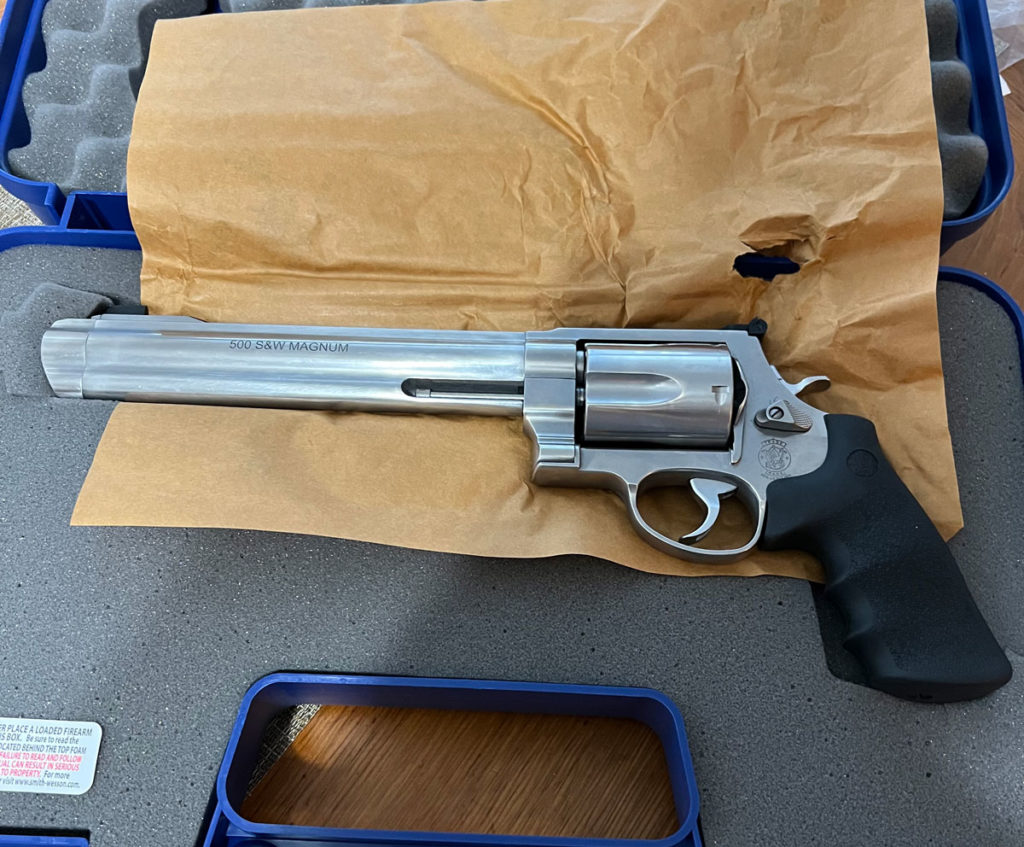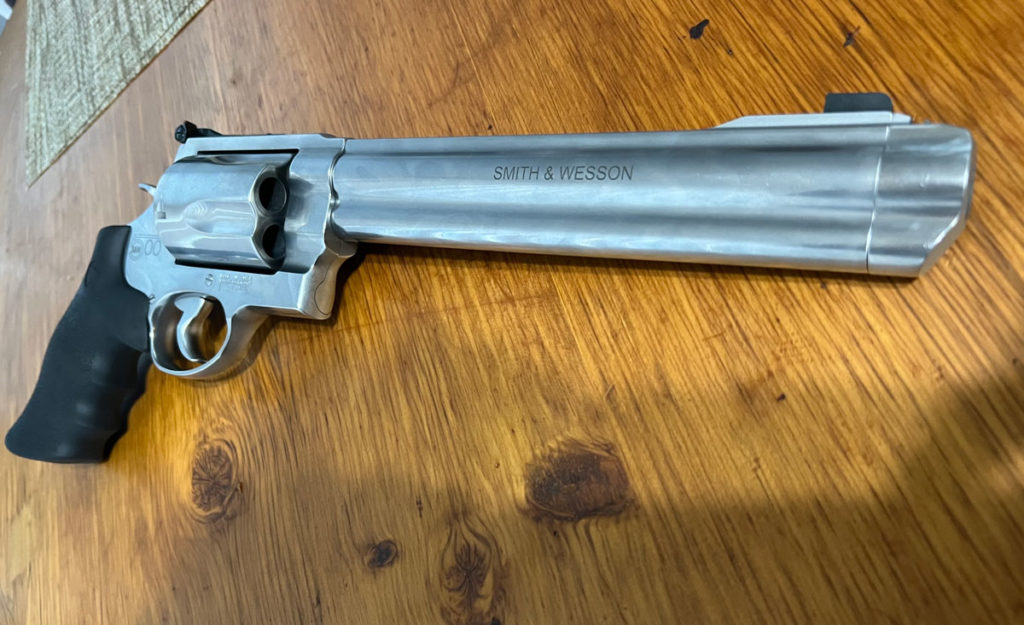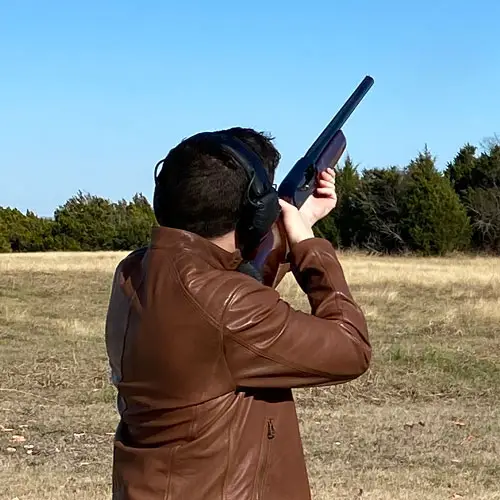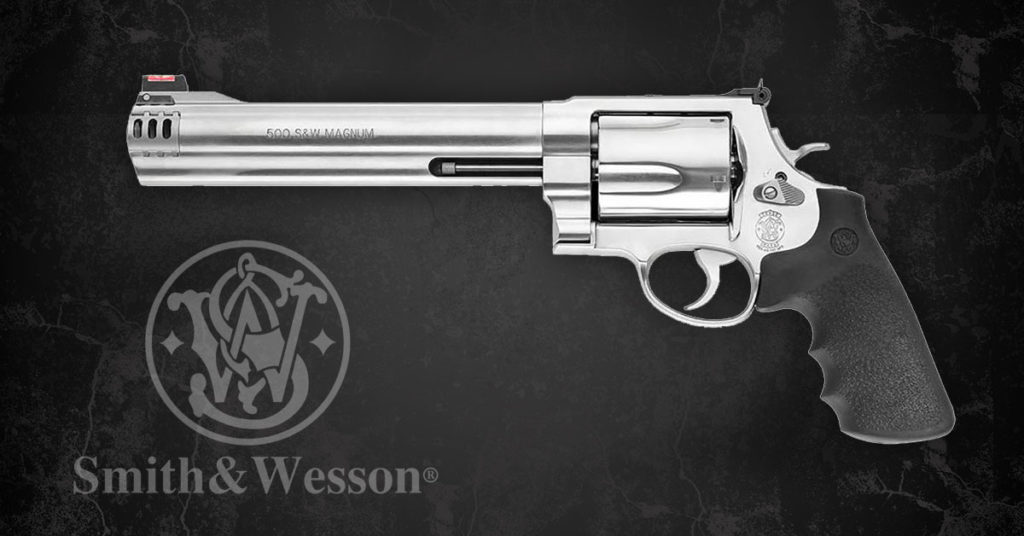Are you thinking about buying a Smith and Wesson .500 Magnum revolver but can’t make up your mind? If so, you’ve come to the right place.
The Smith & Wesson 500 revolver holds the distinction of being the largest production revolver currently on the market. A lot of people admittedly buy it just so they can say that they own the world’s most powerful production handgun. But are there more practical purposes to owning a big gun like the 500 Magnum besides bragging rights? We’ll find out.
This review covers the development of the 500 Magnum revolver and the .500 S&W round, an overview of what this gun has to offer, the different variants that Smith and Wesson currently offers, and the primary reasons to include a 500 Magnum in your arsenal.

Check Price at:
History of the .500 S&W Magnum Round
Why did Smith and Wesson even develop the .500 S&W round in the first place? The answer to that question is simple: they wanted to develop the most powerful handgun cartridge in the world and specifically a cartridge that would single handedly be capable of taking down any North American big game.
357 & 44 Magnum
You see, Smith & Wesson has a history of developing and releasing the ‘most powerful handgun’ cartridge. They attained this status in 1935 with the development of the .357 Magnum round, and did it again with the .44 Magnum in the mid-1950s.
But S&W lost that status with the subsequent releases of new rounds like the .454 Casull (essentially a longer .45 Long Colt) and the .480 Ruger rounds.
500 Magnum Development
In 2002, Smith & Wesson decided that it was time to reattain the status of the manufacturer with the ‘most powerful handgun in the world’ and teamed up with Cor-Bon to develop a new cartridge. S&W chose to work with Cor-Bon because of the latter’s history of developing new and innovative big handgun loads, including the .45 Colt Magnum +P and .400 Cor-Bon rounds).

The Smith & Wesson and Cor-Bon teams worked together to develop the new cartridge utilizing CNC-manufacturing machinery, CAD modeling, and SolidWorks design software. Meanwhile, Smith & Wesson engineers got to work developing a new revolver frame – called the X-Frame – that could accommodate the new cartridge (more on the X-Frame design in a bit).
S&W 500 Release
The new Smith and Wesson 500 Magnum revolver was unveiled at the 2003 SHOT Show and quickly gained attention as the world’s new most powerful production handgun.
The round is capable of dropping any North American big game out to two hundred yards and has been successfully used on African big game as well. It remains the most powerful production handgun to this day.
Overview of the Smith & Wesson .500 Magnum Revolver
At its core, the Smith and Wesson 500 is a simple double action, single action 5-shot stainless steel revolver. In other words, it’s not all that different from the many other revolvers in the Smith & Wesson lineup other than its X-Frame size and caliber…at first glance.
The Frame
In reality the Smith and Wesson 500 has many design differences that set it apart from other Smith and Wesson revolvers aside from its monstrous caliber. The X-Frame utilizes a rifled tube on the inside of the barrel with tensioning on the front of the barrel to help aid in bullet stability and accuracy.
Ball Detent
Furthermore, a ball detent is located in the frame and a center pin in the back of the cylinder to ensure that the cylinder is locked up tightly and can handle the massive rounds.
Compensator or Muzzle Brake
All 500 Magnum revolvers from Smith and Wesson are installed with either a compensator or a muzzle brake (depending on the model) to help mitigate recoil. The rubber grips and the sheer weight of the firearm help to mitigate recoil as well, but honestly, the biggest factor in determining the recoil of the gun comes down to the bullet weight you’re using.

Recoil & Bullet Weight
I’ve found that the lighter 300 and 350 grain .500 Magnum loads generate recoil comparative to a .44 Magnum. Shooting the Smith and Wesson 500 and a Ruger Redhawk .44 Magnum side-by-side, I actually noticed little difference in the recoil between the two guns.
The kick generated by the .500 Magnum increases significantly, however, with the increase in bullet weight. The 400 grain, 500 grain, and 700 grain bullets are not exactly rounds that you’ll want to shoot very often and can generate severe muzzle flip. Make sure that you always hold the 500 Magnum tightly with two hands.
It’s a very unfortunate but also a very real safety hazard that in the hands of an untrained or unsteady shooter, the muzzle of the gun can flip backwards enough towards the shooter’s head…and with the shooter’s finger still over the trigger the hazard here should be obvious.
For this reason, always load one round at a time in the .500 Magnum when shooting it for the first time on the range or when you’re letting someone else shoot it for the first time. Start with the lighter 300 to 350 grain loads and only gradually work your way up. Practice with this firearm is key to ensuring that you can shoot it both accurately and safely.
Why Own a Smith and Wesson 500?
I’ll admit, my own curiosity in the 500 Magnum originated from the fact that it was indeed the world’s most powerful production handgun. But are there legitimate reasons to own this gun besides this fact?
Hunting
But having owned this gun for six months, I can say there are select practical reasons to have a 500 Magnum revolver in your arsenal as well. The round was designed from the onset to be capable of dropping any big game in North America out to two hundred yards, and it can also be used on African big game as well. So if you plan on hunting big game animals with a handgun, the .500 Magnum will be an excellent choice.

Self Defense
Another practical use for the .500 Magnum is for self-defense against aggressive big game animals, such as brown bear or moose. I suggest you carry the revolver in a chest rig (like we’ll explore below) for ease-of-access.
Take note that the massive recoil generated by the round will make accurate follow up shots difficult, so be sure to get plenty of practice at the range.
How To Carry The Smith and Wesson 500
Obviously, the Smith & Wesson 500 is not a concealed carry gun.
In my opinion, the best way to comfortably carry the S&W 500 while also ensuring you can access the weapon quickly if you need to is in a chest rig.
I went with the Galco Kodiak Chest Rig, making sure to get the right model that fits the S&W 500 with the 8 ⅜” inch barrel length, along with a bandolier that slips over the holster and holds an extra five rounds.

In my opinion, the bandolier is a nice accessory to have because it gives you easy access to additional rounds. Not to mention that the holster looks cooler with the spare bullets displayed on the outside, but that’s just my take.
The Kodiak Chest Rig is made out of high quality leather. It’s also very comfortable and easy to adjust, and holds the revolver very tightly and securely.
Current Variants of the Smith and Wesson 500
Smith and Wesson currently makes several variants of the 500 Magnum.
The variant I own and the one you see in the photos is the 8 ⅜” barreled S&W 500 with the muzzle compensator attached to the end of the barrel.
Additional variants made by Smith and Wesson, however, include:
- 8 ⅜” barrel with muzzle brake at the end of the barrel
- 7.5” barrel Performance Center (Chromed hammer and trigger, muzzle brake)
- 7.5” barrel Performance Center with sling swivels and sling
- 4” barrel with muzzle brake at the end of the barrel
- 3.5” barrel with HI VIZ Fiber Optic Sight
Comparison with Other Large Revolvers
The 500 Magnum is hardly the world’s only big bore revolver. Two years later after the release of the 500, Smith and Wesson released another X-Frame revolver that fires the .460 S&W Magnum, which is essentially a lengthened .454 Casull and offers superior velocity than the .500 Magnum (but also less muzzle energy).
The .454 Casull, .45 Long Colt, and .44 Magnum rounds all pack a massive punch as well. And even if none of these calibers equal the .500 Magnum when it comes to ballistics, they are still very respectable calibers that can be used for hunting or defense against big game animals as well.
In other words, the .500 Magnum is your biggest option for a large caliber handgun round…but it’s also not your only option.
Conclusion
Should you buy a Smith amd Wesson 500 Magnum revolver? At the end of the day there are three reasons to consider owning this gun:
- For big game hunting with a handgun
- For defense against dangerous big game
- To brag that you own the world’s largest production handgun (nothing wrong with that!)
If you’re looking for a handgun that fulfills any of those three roles, the .500 Magnum is worth taking a peek at.
Check Price at:

Joseph has been hunting for most of his life. Some of his best memories were growing up sitting in a treestand or a blind and waiting for a monster buck to come along. His main focus has been deer hunting, typically with my trusty 20 gauge shotgun.
